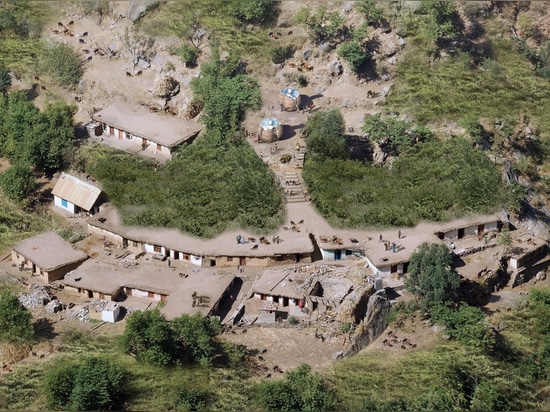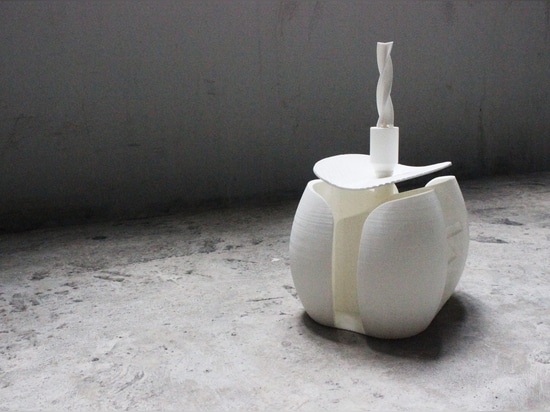
#PUBLIC ARCHITECTURE PROJECTS
Spark's Big Arse toilet could generate electricity in remote Indian villages
Architecture studio Spark has developed a concept for an easily transportable 3D-printed toilet that could convert human waste into electricity.
The module is designed for use in India where the UN is trying to tackle the severe hygiene and sanitation issues associated with open defecation.
Called the Big Arse toilet, it would be 3D-printed from readily available bamboo fibres mixed with bio-polymer resin.
The toilet module would be anchored to a 3D printed reinterpretation of a traditional biogas dome that is buried below ground. The dome, which is sized to function for 10 years, uses human, animal and vegetable waste to generate and store gas.
The biogas produced in the dome would fuel a micro combined heat and power (CHP) unit to create electricity.
The 3D printed shell and its associated dome would be light weight enough to be flown to remote locations by drone and assembled on site.
"There is a worldwide shortage of safe, hygienic sanitation especially in countries such as India and Africa where open defecation is a major contributing cause of disease," Spark told Dezeen. "The UN and Indian government initiatives are trying to tackle the problem.""The Big Arse toilet reinterprets the use and organisation of traditional bio-gas domes to create electricity and gas for those communities that have no access to power networks and utility infrastructure that we take for granted," continued Spark.
"Bio-gas is a product of the breakdown of organic matter, in the case of the Big Arse Toilet the biogas is a product of human waste, food waste and agricultural waste. The biogas can be used directly for activities such as cooking or can be used to drive a micro CHP turbine that converts the gas into electricity."
The toilet block's shell would be 3D-printed as a single piece that comes complete with toilet bowl and basin. The exterior could be rendered or finished with a variety of materials appropriate to local context and environment.
The architects said that the toilet block's curved forms are designed to be structurally sound, relatively easy to print and lightweight.
"The intention is to print the toilet shell from bamboo fibres readily available in India added to a bio-polymer resin," explained the firm. "This is more sustainable and lightweight strategy than using more commonly used 3D printing materials such as plastics and cement."
"The toilets were designed for India but could be used elsewhere in the world," they added. "We are in the process of applying for funding to further develop and engineer our own models and prototypes."
Each year Spark utilises a percentage of its profit to fund the development of self-initiated projects that highlight and support social and environmental initiatives it believes are being ignored by the architecture industry.
Previous Spark research projects have included beach huts made from recycled ocean plastic, and a home farm that combines market gardening with aged care living. Both of the previous projects were recognised by the World Architecture Festival with Awards for innovation.
The Spark Big Arse Toilet was launched on Monday to coincide with World Toilet day under the banner Spark gives a sh*t.




